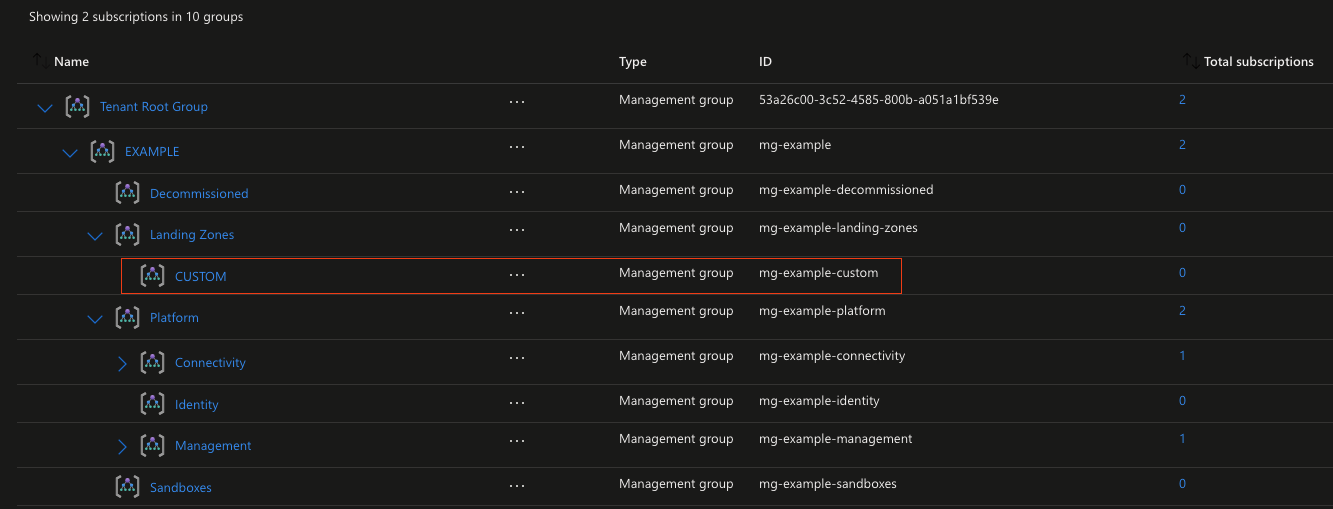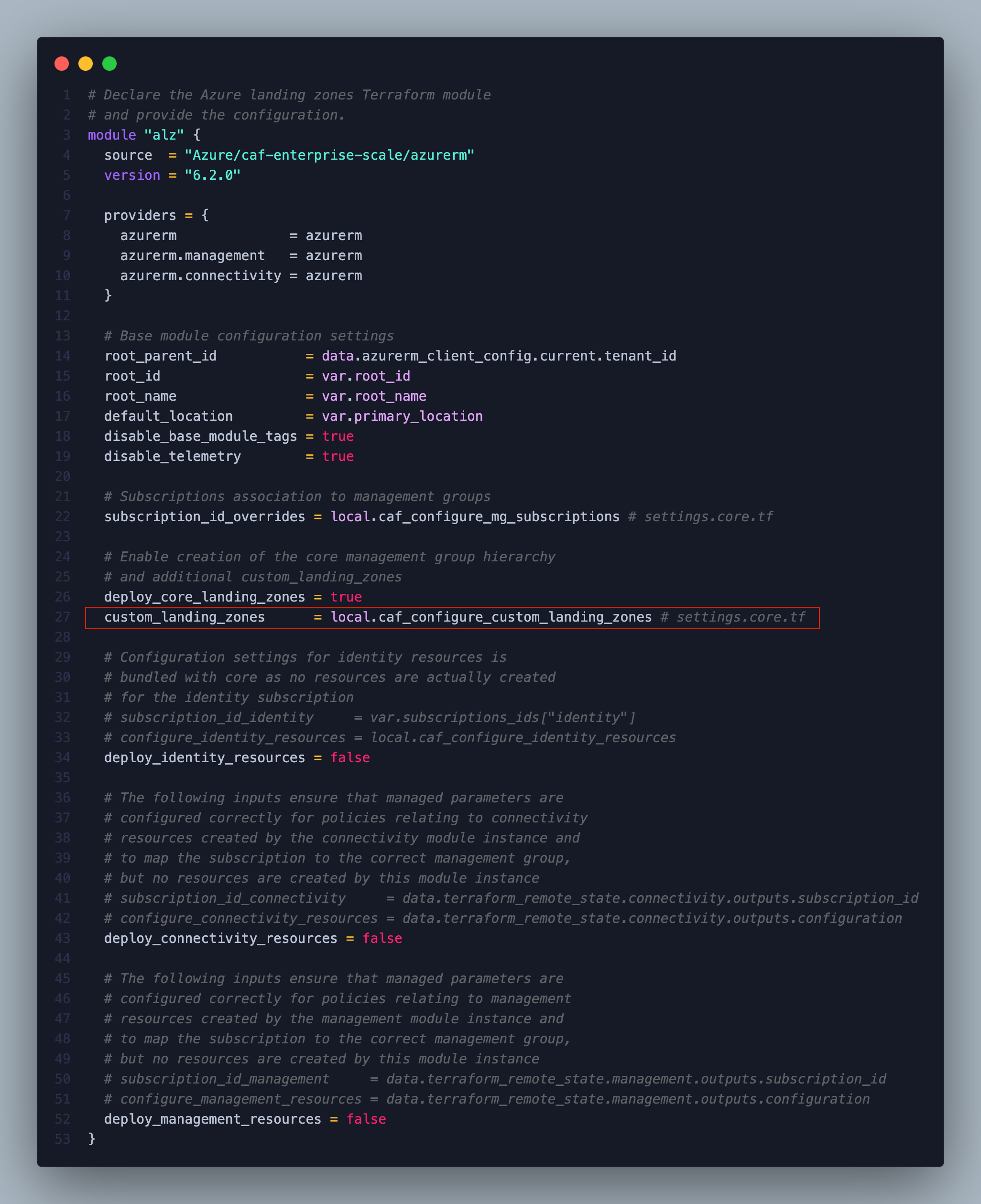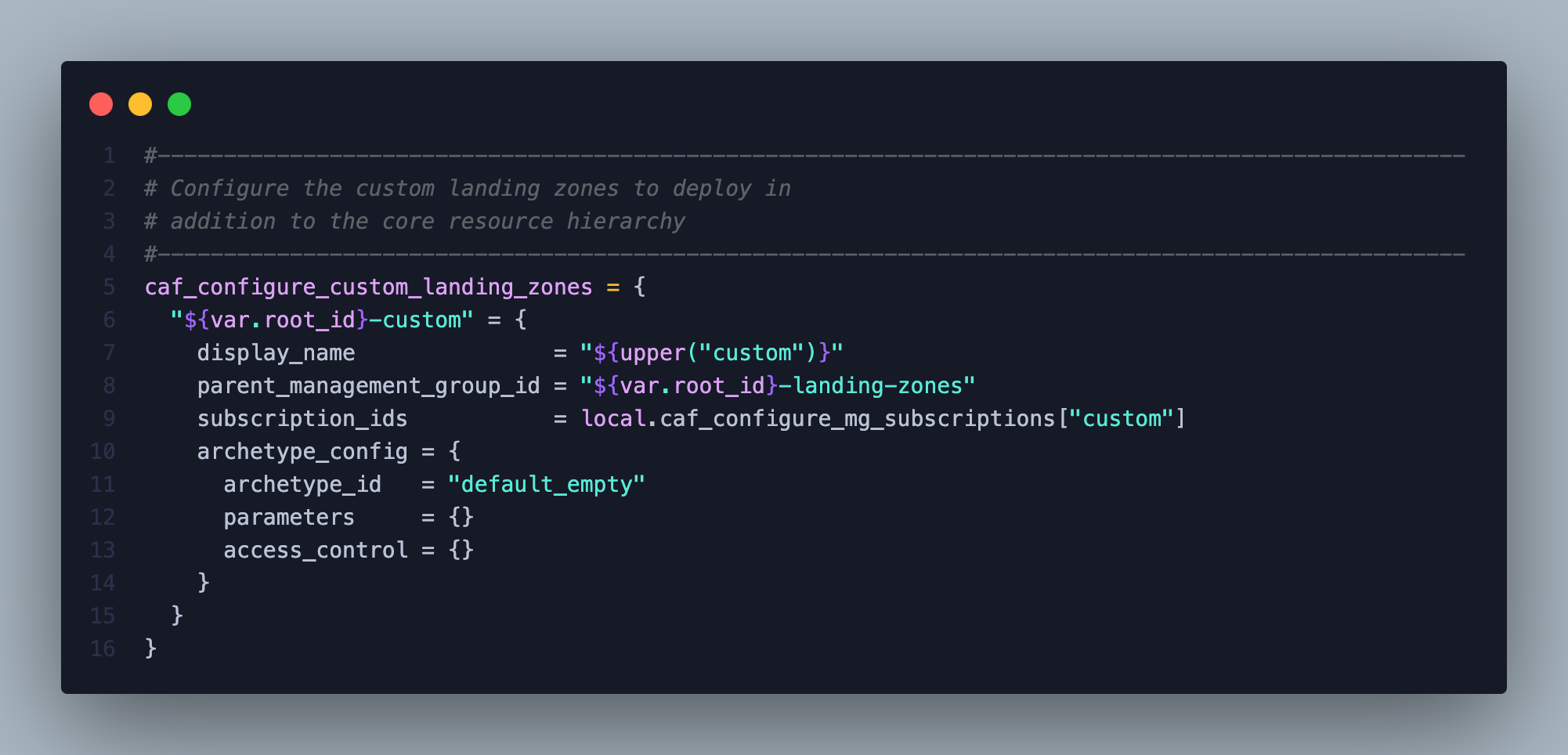Adding the custom_landing_zones parameter
What does the custom_landing_zones parameter do?
The custom_landing_zones parameter is used to deploy additional Management Groups within the core Management Group hierarchy.
Why customize Management Groups when there’s already a structure based on best practices?
Because not all businesses are the same. Sometimes, the default structure doesn’t align with specific requirements, or unique needs arise that demand adjustments. Luckily, the module allows these customizations seamlessly.
Planning the hierarchy carefully is essential to maintain clarity and coherence in your organization.
Example
How you would add a simple Management Group called CUSTOM under the mg-example-landing-zones Management Group, where root_id = “mg-example” and using the default_empty archetype definition.
Key Parameters:
display_nameis the name assigned to the Management Group.parent_management_group_idis the name of the parent Management Group and must be a valid Management Group ID.subscription_idsis an object containing a list of Subscription IDs to assign to the current Management Group.archetype_configis used to configure the configuration applied to each Management Group. This object must contain valid entries for the archetype_id parameters, and access_control attributes.
Management Groups after the custom_landing_zones parameter is added: 
🔗 Check out the repository and stay tuned for future updates: https://github.com/diegosrp/azure-caf/core/adding_custom_management_group
Adjustments in the repository, several changes have been made in this version of the repository that do not directly affect the custom_landing_zones parameter itself.
These changes include the separation of the backend and provider configurations into dedicated files, following HashiCorp’s best practices.
Additionally, I have set the following parameters in the code:
deploy_identity_resources = falsedeploy_connectivity_resources = falsedeploy_management_resources = false
By default, these parameters are already set to false, but they were added to the code for visibility, allowing readers to easily identify them.
Parameter Details:
deploy_identity_resources
Description: If set totrue, this will enable the “Identity” landing zone settings.
Type:bool
Default:falsedeploy_management_resourcesDescription: If set totrue, this will enable the “Management” landing zone settings and add “Management” resources into the current Subscription context.
Type:bool
Default:falsedeploy_connectivity_resourcesDescription: If set totrue, this will enable the “Connectivity” landing zone settings and add “Connectivity” resources into the current Subscription context.
Type:bool
Default:falseThese resources are not being configured at this time. When we proceed with their configuration, it will be done in a separate repository and state to reduce the blast radius, as mentioned at the beginning of the series of episodes on using CAF (Cloud Adoption Framework).
Additionally, the following parameters have been added:
disable_base_module_tags = truedisable_telemetry = true
Parameter Details:
disable_base_module_tags
Description: If set totrue, this will remove the base module tags applied to all resources deployed by the module that support tags.
Type:bool
Default:falsedisable_telemetry
Description: If set totrue, this will disable telemetry for the module. See Telemetry Documentation
Type:bool
Default:false
Lastly, changes have been made regarding on settings.core.tf subscriptions for the Management Group, Connectivity, and Management resources, but these depend on your specific environment.



